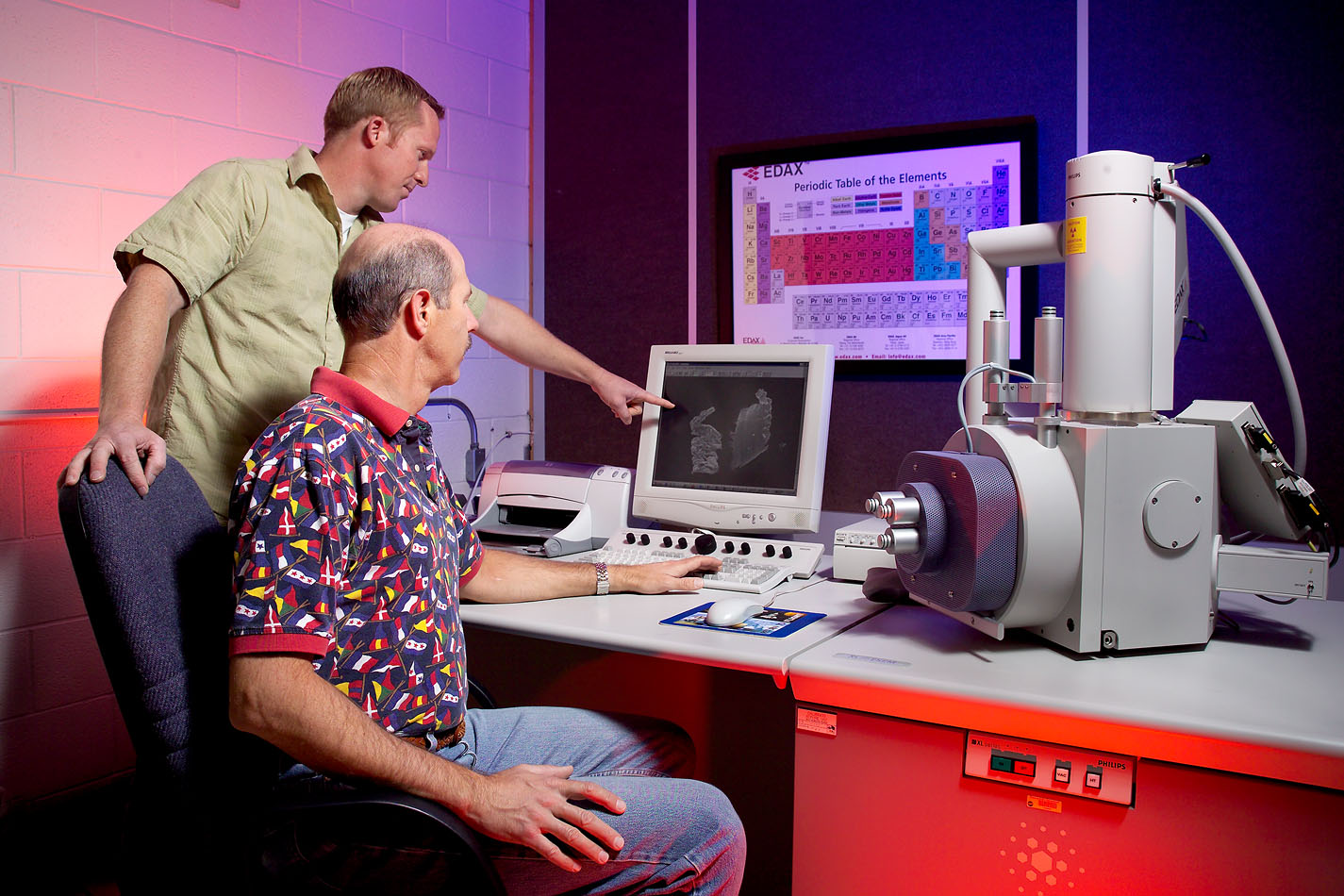Chemical analysis supports material selection, material verification, and failure analysis research by determining a materials composition through element analysis, impurity identification, trace analysis, material identification, and verifying the amount of components in a material.
Fourier Transform Infrared Spectroscopy (FTIR)
FTIR spectroscopy is a method of measuring the infrared absorption of materials to determine their chemical makeup. While FTIR is frequently used for polymer testing and pharmaceutical analysis, the application of the technique is virtually limitless offering both qualitative and quantitative analysis of a wide range of organic and inorganic samples. FTIR is commonly used for identifying additives, contaminants, and assessing purity. This method can also reveal the molecular structure and information about chemical bonds of a material.
Surface Analysis
Surface analysis examines the first five to ten atomic layers of a material to determine particle analysis and identification, such as the elemental analysis, detection of impurities, and identification of physical and chemical defects.
Thermal Analysis
Thermal Analysis examines the properties of materials as they change with temperature. Temperatures measurements and heat flows associated with thermal transitions in materials can be determined for investigation, selection, comparison and evaluation of materials.
X-ray Fluorescence
X-ray fluorescence (XRF) is used for fast on-site and accurate elemental and chemical analysis of metals, ceramics and other materials. XRF analyzers determine the chemistry of a sample by measuring the fluorescent (or secondary) x-ray emitted from a sample when it is excited by a primary x-ray source.
X-ray Microanalysis
Energy dispersive X-ray microanalysis, or EDXMA, is an elemental analysis technique that has a spatial resolution with a diameter many orders of magnitude smaller than x-ray fluorescence. It relies on an interaction of some source of X-ray excitation and a sample. Its characterization capabilities are due in large part to the fundamental principle that each element has a unique atomic structure allowing unique set of peaks on its X-ray emission spectrum. The laboratory instrument is equipped with a silicon drift detector (SDD) allowing very high throughput, high resolution and count rates, and more precise X-ray maps of particle data.
























